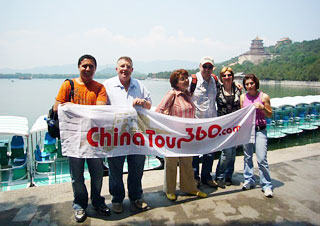 Tour at Summer Palace
Tour at Summer Palace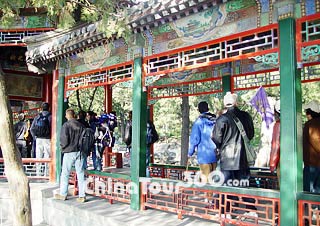 Long Gallery
Long Gallery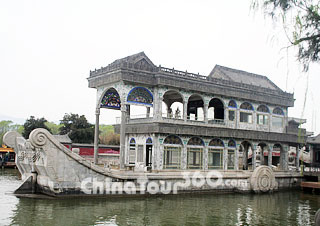 Stone Boat
Stone Boat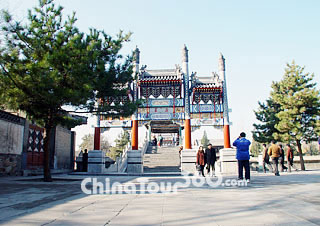 Xingqiao Bridge
Xingqiao Bridge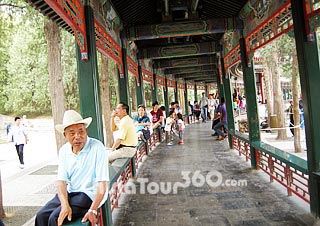 Long Corridor
Long Corridor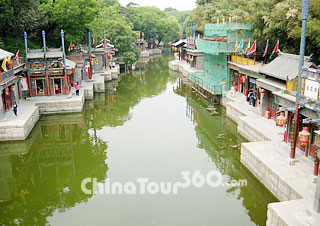 Suzhou Street
Suzhou Street
![]() Summer Palace Attractions:
Summer Palace Attractions:
Court Area
Imperial Living Area
Kunming Lake Area
Longevity Hill - Front Hill Area
Longevity Hill - Rear Hill Area
Longevity Hill - Scattered Sights Area
Scenic Area of 'Pictures of Farming and Weaving'
The Summer Palace (Yiheyuan) in Beijing is one of the four famous gardens in China. The other three are Chengde Summer Resort, Humble Administrator’s Garden and Lingering Garden in Suzhou. Known as a royal garden museum, it is the largest and best-preserved royal garden existing in China. It is a large landscape garden based on Kunming Lake and Longevity Hill. Its construction blends the charming scenery of West Lake in Hangzhou and the design tactics and concepts of the classical gardens in South China. In 1998, it was listed on the World Heritage List by UNESCO.
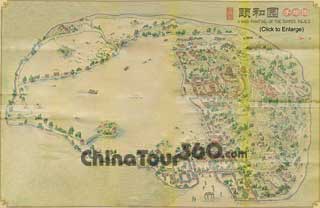 |
| Summer Palace Map |
Covering an area of 2.97square kilometers (293 hectares), the Summer Palace is dominated by Longevity Hill (Wanshoushan) and Kunming Lake. Kunming Lake, lying at the south foot of the Longevity Hill, takes up three fourths of the whole garden. Centering on Tower of Buddhist Incense (Foxiangge), the imperial garden has more than one hundred buildings, over 20 open areas of various sizes and 3,555 ancient structures. The floor space adds up to more than 70,000 square meters (7 hectares), including booths, platforms, towers, cabinets, corridors and pavilions. Of these, the best-known ones are the Tower of Buddhist Incense, the Long Corridor (Changlang), the Marble Boat (Shifang), Suzhou Street, Seventeen-Arch Bridge, Xiequyuan (Garden of Harmonious Pleasures) and the Great Stage. There are also over 1,600 ancient trees and rare wood species.
The main scenic spots in the Summer Palace can be divided into three regions: the political activities area represented by the solemn and majestic Renshoudian (Hall of Benevolence and Longevity), the imperial living area represented by Hall of Happiness and Longevity (Leshoutang), Hall of Jade ripples (Yulantang) and the Yiyun Hall, and the sightseeing area made up of Longevity Hill and Kunming Lake.
History
Formerly known as Garden of Clear Ripples (Qingyiyuan), the Summer Palace, the royal palace and garden of the emperors in the Qing Dynasty, was built during the reign of Emperor Qianlong (1711 - 1799). At that time, many royal gardens and palaces were built by virtue of a strong national strength, including Jingming Garden on Yuquan Mountain, Jingyi Garden on Fragrant Hill, Garden of Clear Ripples on Longevity Hill, Spring Garden and the Old Summer Palace. Of all the gardens, the Summer Palace (formerly Garden of Clear Ripples) was the only one built completely under the design of Emperor Qianlong. The other four gardens were reconstructed or expanded on the basis of that of the former Dynasties. Based on the advantageous terrain of Longevity Hill and Kunming Lake, Qianlong created the outstanding work combing the magnificence of the imperial garden with the beauty of the gardens to the south of the Yangtze River.
In 1860, the 100-year-old Garden of Clear Ripples was severely damaged during war, leaving nothing except some fireproof copper booths and stone buildings. It was rebuilt and renovated from 1886 to 1888 by Empress Dowager Cixi and was renamed as "Summer Palace" literally "Garden of Nurtured Harmony". The original landscapes of the Garden of Clear Ripples were restored in general, but many tall buildings were shortened or reduced in size because of a shortage of funds.
![]() Travel Tips for Summer Palace:
Travel Tips for Summer Palace:
1. There are three gates for the garden: the East, North and the New Palace Gates. Tourists can enter through any of the gates and choose a proper route for your visit.
2. It’s best to visit it on a sunny day when you can appreciate floating clouds and the rippling lake in the breeze.
3. Tourists can overlook the city of Beijing from the Tower of Buddhist Incense.
4. Remember to wear a pair of light and comfortable shoes suitable for extensive walking.
![]() Entrance Fee:
Entrance Fee:
CNY 30 (Apr. 1 to Oct. 31); CNY 20 (Nov. 1 to Mar. 31)
Through Ticket:
CNY 60 (Apr. 1 to Oct. 31); CNY 50 (Nov. 1 to Mar. 31)
![]() Transporation:
Transporation:
![]() Take Bus No. 209, 330, 331, 332, 346, 394, 683, 696, 712, 718, 726, 732, 801, 808, 817 or 926 and get off at the Summer Palace (Yiheyuan) Stop;
Take Bus No. 209, 330, 331, 332, 346, 394, 683, 696, 712, 718, 726, 732, 801, 808, 817 or 926 and get off at the Summer Palace (Yiheyuan) Stop;
![]() Take Bus No. 303, 330, 331, 346, 375, 384, 393, 634, 683, 696, 716, 718, 801, 808, 817, 834 or T5 and get off at the Noth Gate of Yiheyuan;
Take Bus No. 303, 330, 331, 346, 375, 384, 393, 634, 683, 696, 716, 718, 801, 808, 817, 834 or T5 and get off at the Noth Gate of Yiheyuan;
![]() Take Bus No. 374, 437, 481, 704, 952 or 991 and get off at the New Gate of Yiheyuan;
Take Bus No. 374, 437, 481, 704, 952 or 991 and get off at the New Gate of Yiheyuan;
![]() Take Bus No. 469 and get off at the West Gate of Yiheyuan;
Take Bus No. 469 and get off at the West Gate of Yiheyuan;
![]() Take Subway Line 4 and get off at Xiyuan Station or Beigongmen Station.
Take Subway Line 4 and get off at Xiyuan Station or Beigongmen Station.
Capital Beijing Travel: 4-Day of Beijing
China Highlights Tour: 9-Day of Beijing - Xian - Shanghai
Beijing Impression Tour: 5-Day of Small Group Beijing Tour








